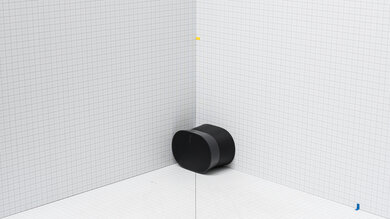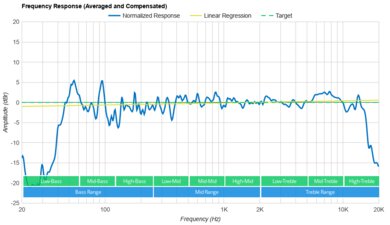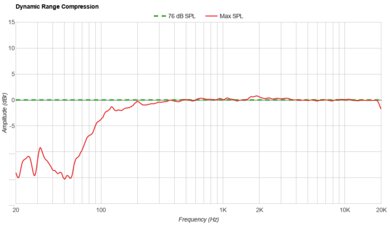
We've currently tested 10 Sonos speakers. Sonos is an American brand that manufactures home audio products, primarily speakers and soundbars. Their speakers have a range of features, depending on the model, like a room correction tool, app support, and access to Dolby Atmos content, so you can choose one that best suits your needs. Within the Sonos ecosystem, compatible speakers and soundbars are easy to pair together, so you can listen across multiple rooms or create a surround sound setup complete with dedicated subwoofers. Many Sonos speakers have a wired design, making them most suitable for home use, but there are also portable models you can integrate with a Sonos system or use independently.
Updates
- 11/12/2024 Sonos Move 2 updated
- 06/20/2024 Sonos Roam 2 reviewed
- 04/12/2024 Sonos Era 300 updated
- 04/12/2024 Sonos Era 100 updated
- 01/17/2024 Sonos Roam/Roam SL updated
-
Best Sonos Speaker
Music7.7Videos/Movies7.0Podcasts6.8Voice Assistant8.8Outdoors5.5Battery PoweredNoSpeakerphoneNoVoice AssistantYesBluetoothYesWi-FiYesThe best Sonos speaker we've tested is the Sonos Era 300. Released in 2022, this sleek home speaker offers a wide array of features to make the most of your listening experience. Bluetooth and Wi-Fi support make it easy to stream content to the speaker over a wireless connection, and built-in Alexa gives you hands-free control. It's also one of the only speakers we've tested to support Dolby Atmos, which is handy if you want to listen to Dolby Atmos Music through a compatible music streaming service like Apple Music. You can pair it with other Sonos speakers to spread audio throughout your home or with a soundbar to create a more immersive surround sound setup.
As with most premium speakers on the market, this device has a room correction tool that's designed to adjust its output based on your room's unique acoustics. The full feature, called 'Trueplay,' is only available on iOS, but for now, Android users can make do with a paired-down alternative called 'Quick Tuning.' This option only uses the microphones built into the speaker and doesn't take advantage of the microphones in your smartphone like the full offering, but it's still a good alternative. Bass and treble adjustments in the Sonos app let you manually adjust the speaker's output, too. Of course, it's wired-only, so it's not designed for portability—but it's a standout choice for at-home use.
-
Best Mid-Range Sonos Speaker
Music7.6Videos/Movies6.9Podcasts7.3Voice Assistant8.8Outdoors5.6Battery PoweredNoSpeakerphoneNoVoice AssistantYesBluetoothYesWi-FiYesIf you want a more affordable option, check out the Sonos Era 100. Also released in 2022, this sleek home speaker is a smaller and more affordable alternative to its larger cousin, with many of the same cool features on hand. Like the Sonos Era 300, it supports Bluetooth connectivity and Wi-Fi, and its built-in Alexa capabilities let you control the device using only your voice. Through the Sonos app, you can pair it with other compatible devices from the manufacturer to spread sound throughout multiple rooms in your home. You can also connect it with a Sonos soundbar to create an immersive surround sound system in your living room.
Unlike our top pick, this speaker doesn't support Dolby Atmos. That said, it can play audio in stereo, which results in a wide sound with good instrument separation. Since it supports Trueplay, you can adjust its output based on your room, and the less stringent Quick Tuning alternative is still available for Android users. For the price, it offers good sound quality, making it suitable for many different types of audio content. Overall, this speaker is a great value pick.
-
Best Budget Sonos Speaker
Music6.5Videos/Movies6.2Podcasts7.7Voice Assistant8.6Outdoors6.7Battery PoweredYesSpeakerphoneNoVoice AssistantYesBluetoothYesWi-FiYesThe Sonos Roam 2 is the manufacturer's most budget-friendly option. While the differences between this speaker and the original Sonos Roam/Roam SL are slight, it's still a solid pick if you're looking for a smart speaker that won't break the bank. It performs well for the price and offers access to many of the same features as the manufacturer's more premium models, like Trueplay or Quick Tuning room correction and bass and treble sliders. Built-in voice assistant support is also available for hands-free control, although they've phased out Google Assistant support in favor of Alexa and Sonos voice assistants. Thankfully, this iteration includes separate Bluetooth and power buttons, which makes it easier to use than the original.
Available in several colors, this speaker is small enough to fit in a backpack and has a more lightweight build than the premium options listed here. It's also rated IP67 for dust and water resistance, so it can withstand some exposure to the elements. With a battery life of only five hours, though, it doesn't last as long off a single charge as more premium options like the Sonos Move 2. Although it can get a bit louder than its predecessor, its sound quality still isn't on par with the Move 2, as it has to downmix stereo content into mono. Still, if budget is a concern or if you prefer something smaller, this speaker is worth a look.
-
Best Portable Sonos Speaker
Music7.5Videos/Movies6.9Podcasts7.8Voice Assistant8.8Outdoors7.6Battery PoweredYesSpeakerphoneNoVoice AssistantYesBluetoothYesWi-FiYesLove listening to music on the go? The Sonos Move 2 packs plenty of premium features into a lightweight design, so you can rock out in different rooms of your house, take the party out to the backyard, or even bring it to the park. Built-in Alexa gives you hands-free control, and the IP56 rating for dust and water resistance helps protect it against the elements. Since it's battery-powered, you don't need to worry about plugging it into an outlet, which gives you even more flexibility than the similarly priced Sonos Era 300. You can even replace the battery to extend the life of your investment.
This speaker is larger and heavier than the Sonos Roam 2, which may not be ideal for everyone. That said, the added heft makes a difference in the sound. Notably, it gets louder than the Roam 2 and can reproduce more thump and rumble in the low-bass. As a result, it's much more suitable for bass-heavy genres like EDM and hip-hop. It also plays in stereo, and its room correction feature optimizes sound based on your space. If you want a high-end portable device or just a single speaker for at-home and portable use, this is a solid option.
Compared To Other Brands
-
Built-in voice assistants.
Some Sonos speakers have built-in voice assistants, typically Alexa and Google Assistant. They generally understand commands and questions well, even from far away and in noisy environments.
-
Well-balanced sound profile.
The Sonos speakers we've tested tend to have well-balanced sound profiles, making them suitable for listening to most audio content. Many can also produce a thumpy low-bass, which will please fans of bass-heavy genres. -
In-app sound customization options.
The Sonos app is compatible with most Sonos speakers we've tested; you can use it to control multiple Sonos speakers simultaneously. While it doesn't include a full graphic EQ, it has bass and treble sliders, letting you tweak the speaker's sound to your liking. It also has a room correction feature Sonos calls Trueplay. However, the full feature is currently only available with iOS devices.
-
Multiple devices can be linked together.
Using the Sonos app, you can pair multiple Sonos speakers to amplify your audio or play it across different rooms in your house. Some Sonos speakers, like the Sonos One SL, can also be paired with compatible soundbars to create a surround sound system.
-
Some wired-only models.
Some Sonos speakers we've tested only work when plugged into a power source, making them less than ideal for outdoor use. That said, there are also a few battery-powered models available.
-
Older models lack Bluetooth compatibility.
Older Sonos speakers are wired and designed for at-home use, meaning they can't stream audio over Bluetooth. Fortunately, Sonos speakers tend to be Wi-Fi compatible, so you can stream audio using Apple AirPlay. Plus, most newer models have added Bluetooth connectivity.
-
Downmixes stereo content into mono.
In general, the Sonos speakers we've tested have to downmix stereo content into mono when used alone, resulting in a soundstage that isn't as immersive-sounding. However, you can often connect them with another compatible speaker to create a stereo pair.
Sonos vs Bose
Both manufacturers focus on producing premium, high-end products for in and out of the home. With smart features like built-in voice assistants, their speakers are designed for easy integration with existing products in their respective ecosystems. However, unlike Sonos, Bose speakers aren't as limited to iOS support, and even their older models support Bluetooth.
Sonos vs Apple
Apple speakers are designed for home use, so you won't find portable Bluetooth options like with Sonos. Still, both speaker manufacturers release products with stand-out voice assistant performance, and depending on whether you prefer Alexa or Siri, you may opt for one over the other. However, Apple speakers aren't as customizable as Sonos, as they don't offer bass or treble adjustments.
Overall, Sonos makes speakers with well-balanced sound profiles suitable for home use. Some are even compatible with certain Sonos soundbars, letting you create a surround sound system. Many of their speakers have built-in voice assistants, like Alexa and Google Assistant. They're typically compatible with the Sonos app, which has customization features like a room correction tool Sonos calls Trueplay and bass and treble sliders. However, the full feature is currently only available with iOS devices, which may disappoint some users. Some Sonos speakers don't support Bluetooth, so you may have to stream audio over Apple AirPlay or an AUX port, which is helpful if you want to integrate a vinyl record player into your setup.
Lineup
Compared to other speaker manufacturers, Sonos only offers a few models on the market at a time. Their naming conventions reveal a bit about their products' intended use. As with many other speakers, the higher the number, the more features you'll find.
- Era lineup: Wired home speakers with built-in voice assistant support, released in 2022.
- One lineup: A precursor to the Era lineup, these wired home speakers with built-in voice assistant support were released in 2019. Unlike the Era speakers, they lack Bluetooth connectivity.
- Move lineup: Portable Bluetooth and Wi-Fi compatible speakers with built-in voice assistant support.
- Roam lineup: Another line of portable Bluetooth and Wi-Fi compatible speakers, available at a budget-friendly price.
Recent Updates
-
We've updated the name of the Sonos app and made other small text edits but haven't changed our picks.
-
We've checked that all our picks are in stock, but haven't changed them.
-
Sep 30, 2024 : We've looked over this article for clarity and accuracy but have made no changes.
-
Jul 02, 2024 : We've replaced the Sonos Roam/Roam SL with the Sonos Roam 2 as our best budget pick due to small improvements in the controls and slightly better dynamics performance. Otherwise, we've only made minor changes to the text to improve accuracy.
-
Apr 04, 2024 : This article has been checked for accuracy with no changes to the picks, and only minor text edits.
Conclusion
Sonos offers a variety of speakers that are suitable for different uses. Generally, they have well-balanced sound profiles, and some can even produce a thumpy low-bass. The best Sonos speakers have built-in voice assistants like Alexa and Google Assistant, making them suitable for home use. Many options have a wired-only design, limiting their portability.
Test Results
Comments
Best Sonos Speakers: Main Discussion
What do you think of our picks? Let us know below.
Looking for a personalized buying recommendation from the RTINGS.com experts? Insiders have direct access to buying advice on our insider forum.
Update: We’ve updated the name of the Sonos app and made other small text edits but haven’t changed our picks.
What do you think of these changes? Let us know












































